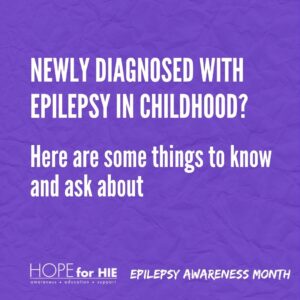
There is a cohort of kids who will persistently need medications out of the NICU, and there are children who will not have persistent seizures, or experience neonatal seizures at all, but develop epilepsy later in childhood. There are a few nuances for what is most typically seen with these epilepsy cases, and some things to ask about (some of these are great for anyone with an epilepsy diagnosis as well).
These are some tips in the immediate day or two after your child has a seizure, when you may be having an urgent appointment with your child’s neurologist to discuss a plan forward.
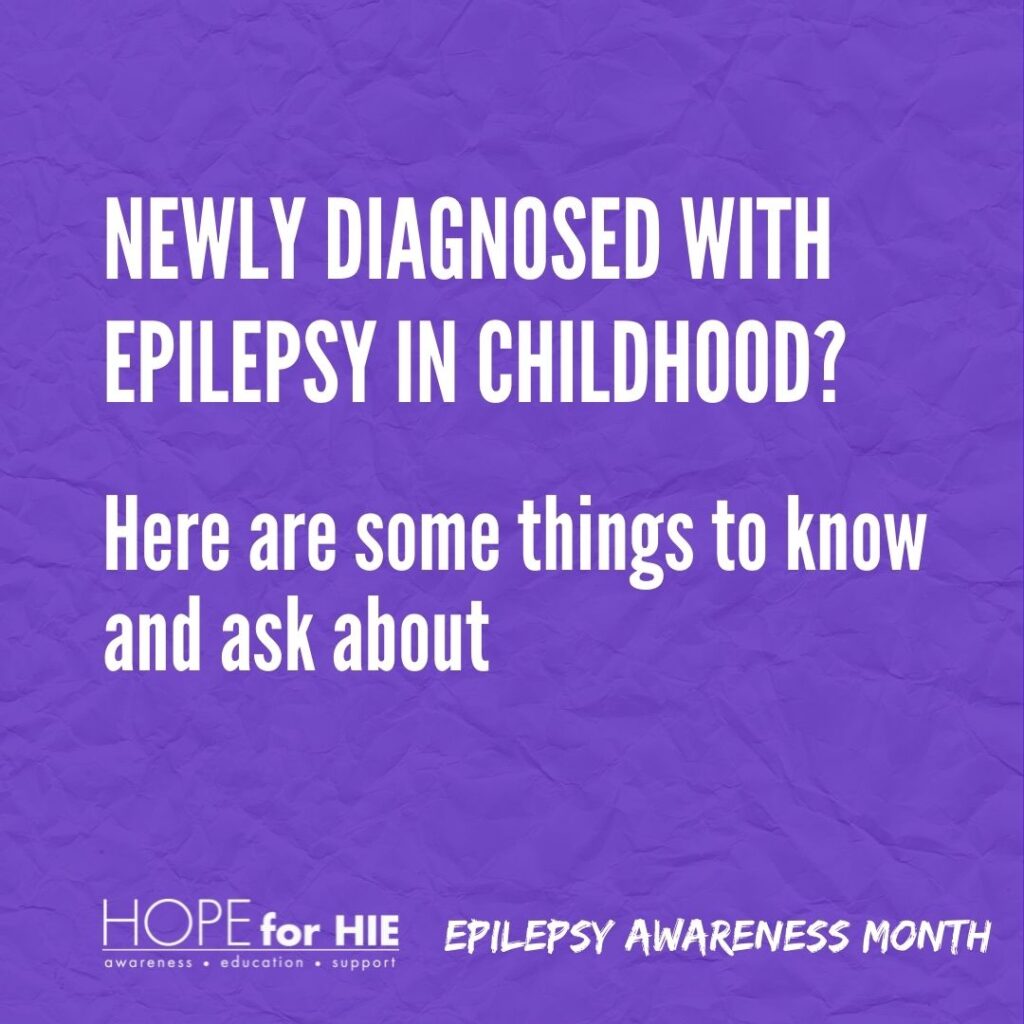
Babies and children who experience HIE, hypoxic ischemic encephalopathy, are up to five times at greater risk for developing epilepsy than the general population. That being said, epilepsy is one of the most common diagnoses, impacting 1 in 26 people in the population.
The most common times we see new cases of HIE-acquired epilepsy are around ages 4, 6, 8 and during puberty… during significant periods of growth, hormonal changes, etc.
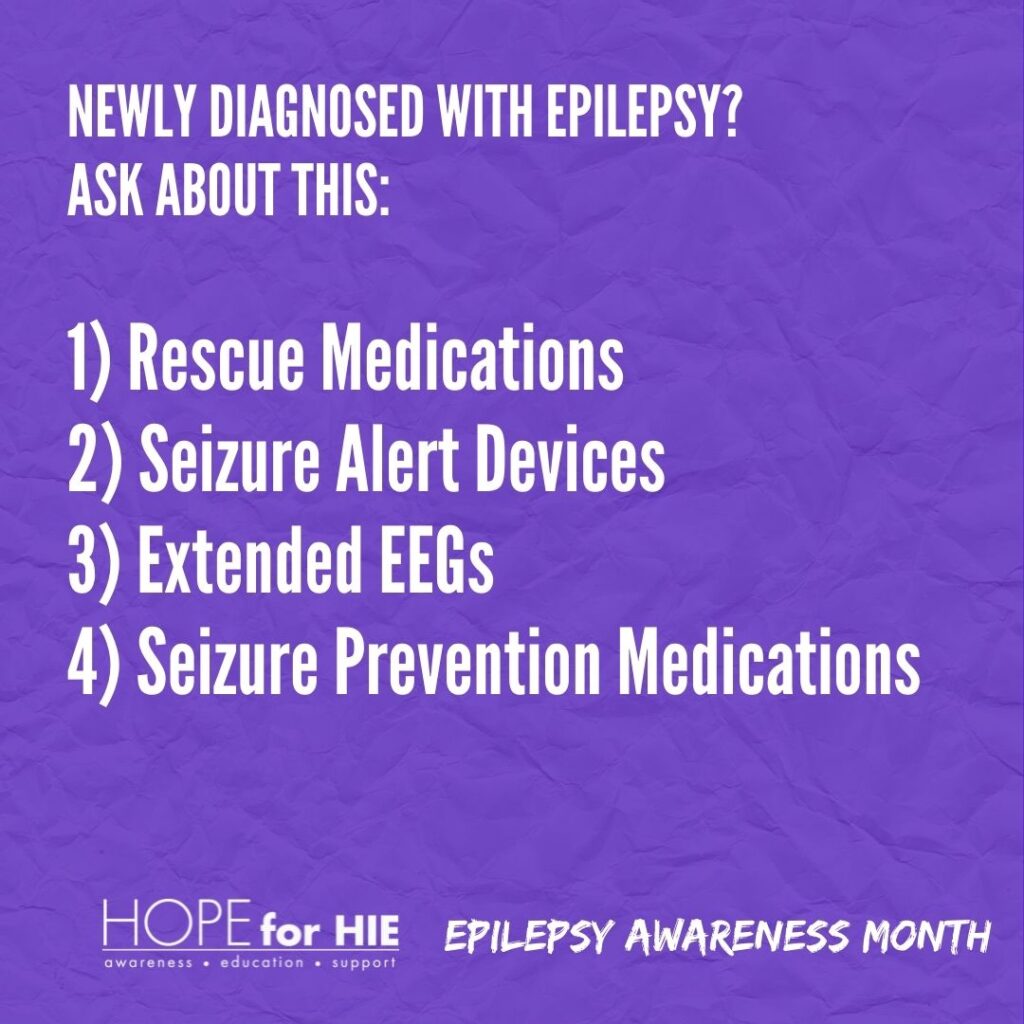
We know it can be a very stressful time after you discover your child has had a seizure in childhood, after not having them for many years, since the NICU, or ever. There are some things you can do to be proactive and discuss with your child’s neurologist.
In addition to the four points to ask your neurologist about, we recommend the entire family gets Seizure First Aid training.
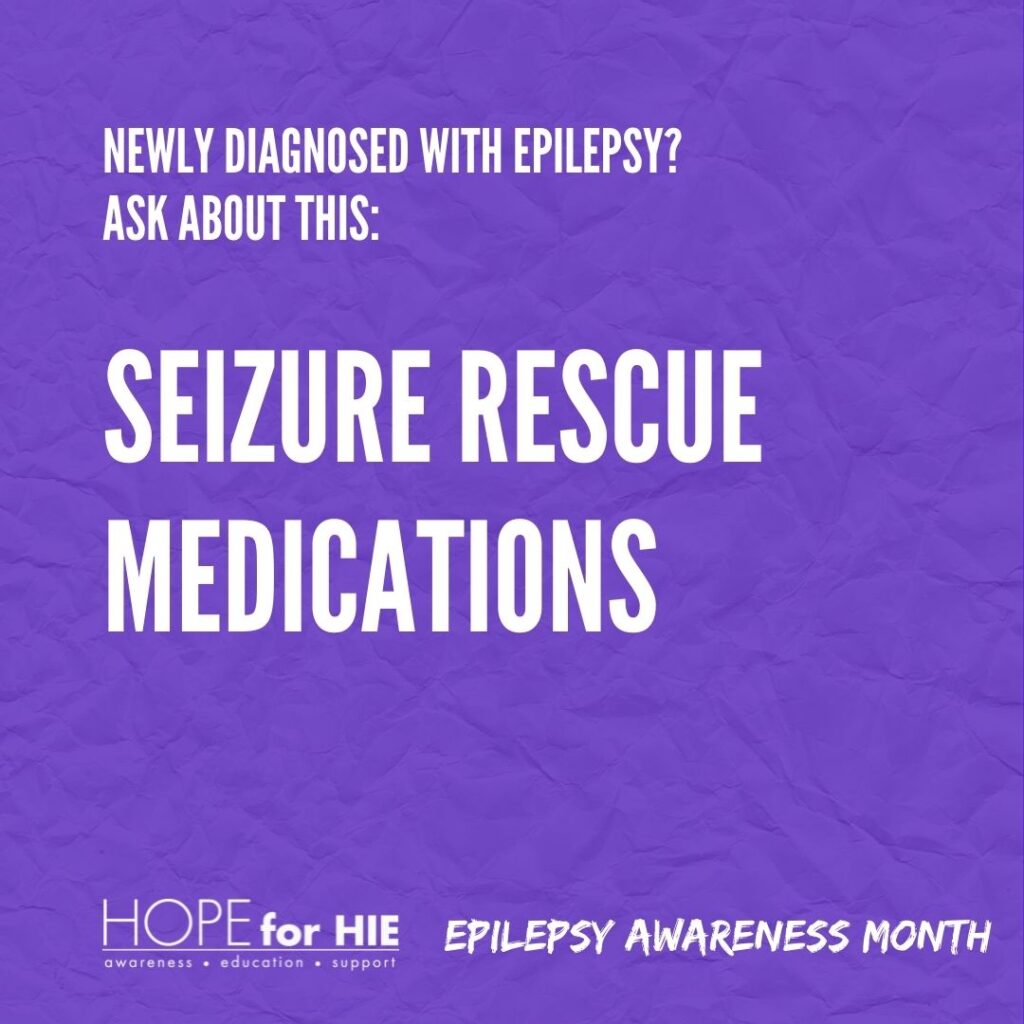
Seizures can be unpredictable. While most seizures are self-limiting, meaning they stop on their own, some may last longer. While the potential for causing additional brain damage is low, seizures that last longer than five minutes may need a rescue medication to stop it, or seizures may cluster and need a rescue medication to stop the cluster.
A seizure rescue medication is to be used with certain parameters discussed by your child’s neurologist and may vary depending on your child’s age, frequency, type of seizures, and other risk factors.
There are several different rescue medications that can be prescribed to have on hand, even if your child is not on a seizure prevention medication, and has only had one seizure. Peace of mind is an important part of mental health in parenting children at risk for epilepsy and seizures, and we encourage families to build tools that will help you feel prepared to help your child, if needed.
Medication Delivery Methods: An Opportunity for Dignity
There are two types of medication delivery methods available for children, nasally and rectally. Depending on the age of the child, a nasal medication may not be available (YET!). Both delivery methods have been shown to quickly stop seizures and seizure clusters in a rescue situation. For children 6+, a nasal rescue medication is a more dignified delivery system, and easier to train other caregivers to use. It is our hope that this delivery method is approved for younger children (and hopefully we’ll be able to update this blog post accordingly when it gets approved!)
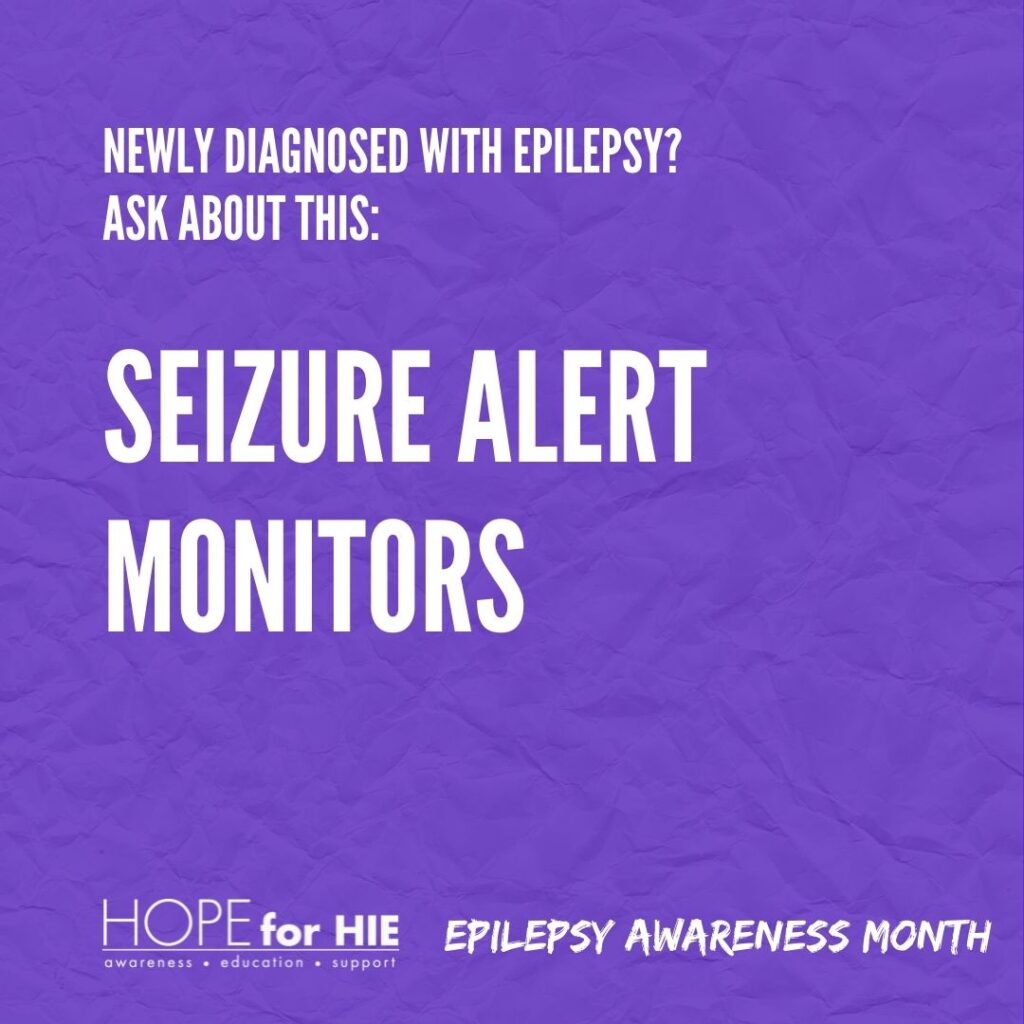
Some types of seizures can be caught by devices made to detect certain types of seizures and alert caregivers. These devices can be especially important for catching and treating nocturnal seizures. They vary depending on seizure type, child’s age, and method to track and catch the seizure.
Other monitoring equipment that may be helpful include pulse oximeters and higher quality video monitors. Seizure service dogs may also be worthwhile to look into.
Ask your child’s neurologist about any suggested or appropriate seizure alert monitors. Some require prescriptions, and insurance may cover them.
There are several foundations that may be able to assist with funding, and keep lists of the newest, tested and recommended devices and other seizure monitoring on their websites:
Please note: Seizure alert monitors may not pick up every seizure, and they should not be relied 100% to do so. They may also have false alarms. However, the technology is always improving and we are hopeful that current devices will continue to improve, and more will come to the market with more accurate products.
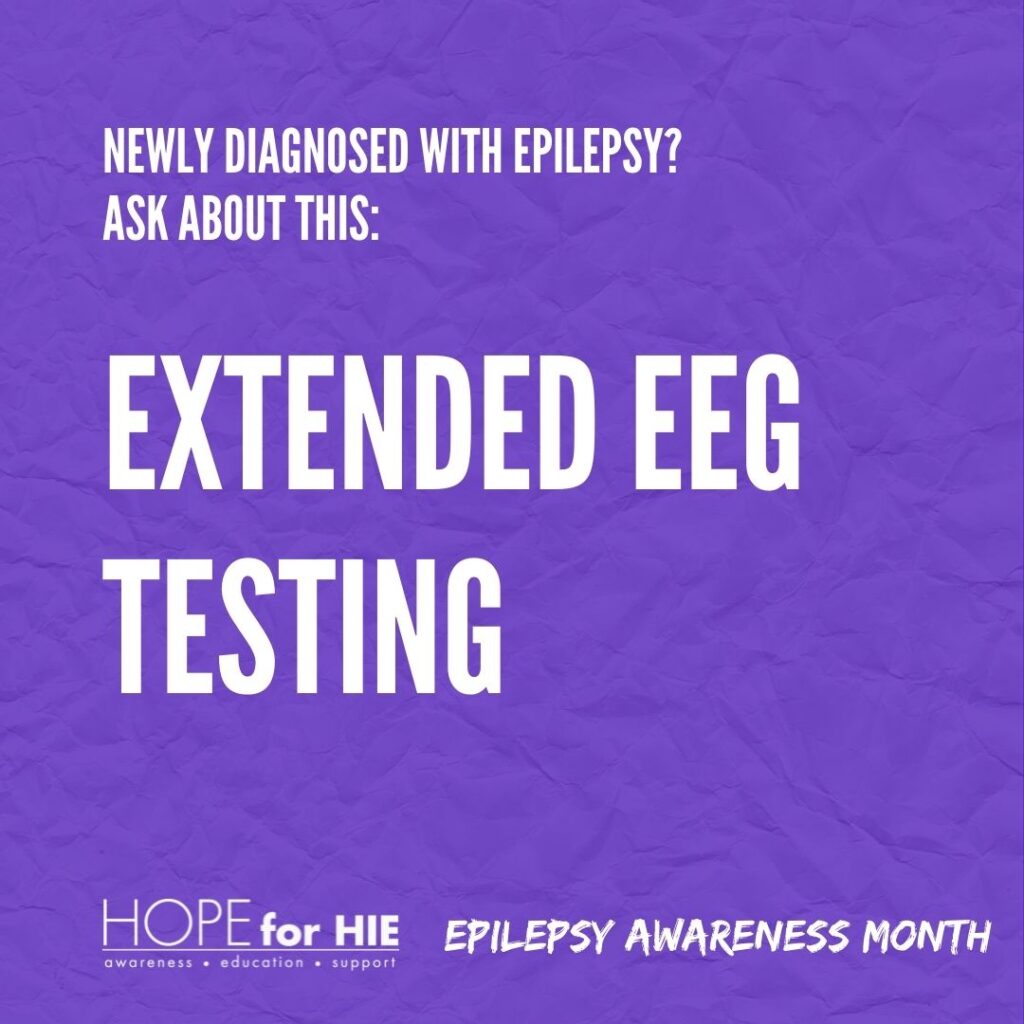
EEGs (Electroencephalogram) measure and assess brainwaves. These can show abnormal spikes in brainwaves, and help determine what type or types of epilepsy your child has, or is at risk for.
For children who have not had any neonatal seizures, have not had seizures since the neonatal period, or have not had any seizures after many years of control, an extended, overnight EEG of 24-72 hours may be an extraordinarily helpful tool to gain insight into the state of the brain vs. a typical prescribed sleep-deprived EEG.
Insurance coverage may vary, or may have certain qualifications your neurologist should know about to work with the approval process.
Your child’s medical team will communicate the exact protocols, timing and preparation they want you to do. We’ve gathered some information that may be helpful, too.
Helpful EEG Links:
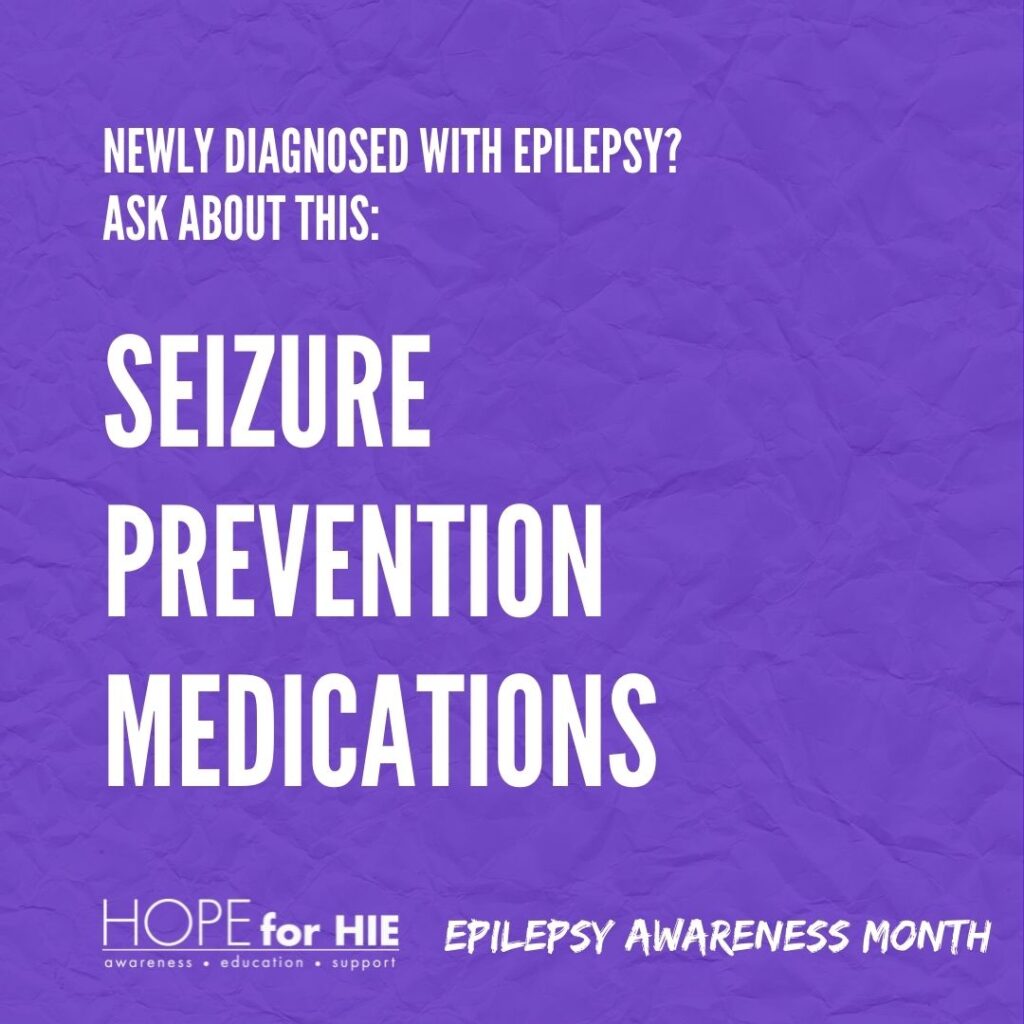
There are nearly 30 seizure prevention and control medications available approved to treat epilepsy. Sometimes they are called anti-epileptic drugs (AEDs).
Depending on the situation, many neurologists will wait to prescribe medications to control and prevent seizures until after a child experiences a second seizure.
For many children, the first medication may be successful to stop further seizures from happening. For others, it may be more of a trial and error with dosage, or finding the right medication or medications to find seizure control.
Talk to your child’s neurologist about the options available, and their anticipated plan for dosage, and any adjustments that may be needed.
Connect with families, read inspiring stories, and get helpful resources delivered right to your inbox.